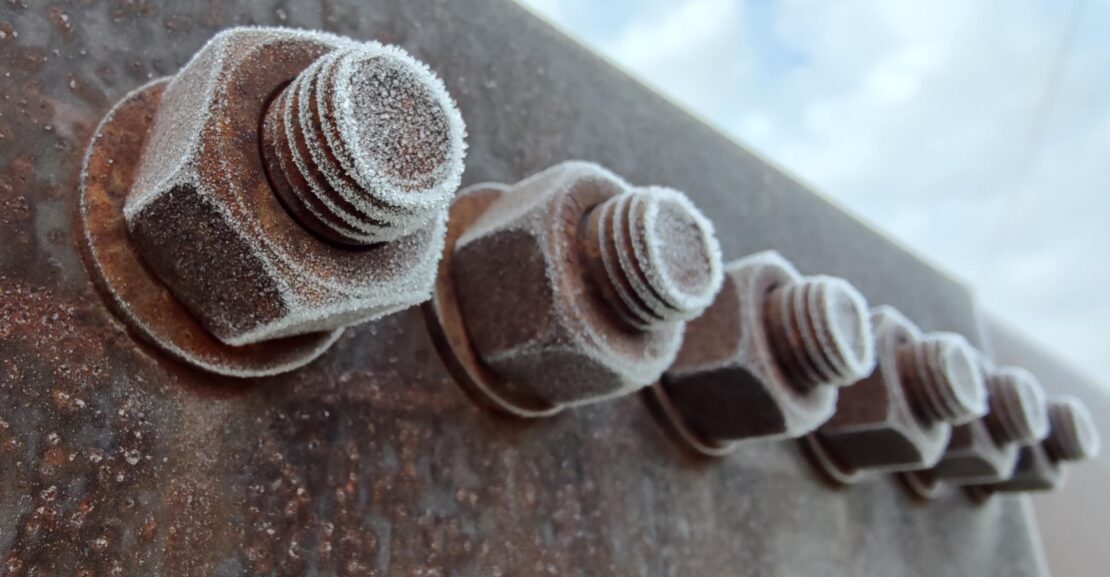Fasteners, pivotal in heavy structural steel connections, are vital components in marine and bridge construction projects. These connections must withstand extreme environmental conditions, dynamic loads, and corrosive marine environments, demanding robust fastening solutions to ensure structural integrity and safety.
Types of Fasteners
Various types of fasteners are employed in marine and bridge construction, each designed to meet specific requirements and challenges:
1. Bolts and Nuts: Bolts and nuts are commonly used to connect structural steel elements in bridges and marine structures. High-strength bolts with appropriate coatings, such as galvanized or stainless steel, are selected to resist corrosion in marine environments.
2. Rivets: Rivets were traditionally used in bridge construction but have largely been replaced by bolts in modern applications. However, they are still occasionally used in heritage or restoration projects.
3. Anchor Bolts: Anchor bolts are used to secure structural elements to concrete foundations in both marine and bridge construction. They provide a reliable connection between steel components and concrete structures, ensuring stability and load transfer.
4. Threaded Rods: Threaded rods are used in conjunction with nuts and washers to create adjustable connections or to anchor steel components to concrete or other substrates.
Applications in Marine and Bridge Construction
In marine construction, fasteners are subjected to harsh conditions, including saltwater exposure, wave action, and corrosion from marine organisms. Therefore, corrosion-resistant materials and coatings are essential to ensure the longevity and performance of fasteners in marine environments.
Similarly, in bridge construction, fasteners must withstand heavy loads, vibrations, and environmental factors such as temperature variations and moisture exposure. Proper selection and installation of fasteners are crucial to ensure the structural integrity and safety of bridge components.
Considerations for Selection and Installation
Several factors must be considered when selecting and installing fasteners for marine and bridge construction:
1. Corrosion Resistance: Fasteners must be made from corrosion-resistant materials such as stainless steel or coated carbon steel to withstand corrosion in marine environments.
2. Load Capacity: Fasteners must be selected based on their load-bearing capacity and compatibility with the structural components they connect.
3. Installation Method: Proper installation techniques, including torque specifications and tightening procedures, must be followed to ensure the integrity of fastened connections.
4. Accessibility: Access to fasteners for inspection, maintenance, and potential replacement must be considered during the design and installation phases.
5. Environmental Factors: Environmental factors such as temperature, moisture, and exposure to chemicals or pollutants can affect the performance of fasteners and must be taken into account during selection and installation.
Conclusion
Fasteners are indispensable components in heavy structural steel connections for marine and bridge construction. Proper selection, installation, and maintenance of fasteners are essential to ensure the longevity, safety, and performance of marine and bridge structures in challenging environments. By understanding the types, applications, and considerations for fasteners in marine and bridge construction, engineers and contractors can make informed decisions to create robust and durable infrastructure that withstands the test of time.
Fasteners | Heavy Structural Steel Connections for Marine and Bridge Construction
This article explores how fasteners are crucial in heavy structural steel connections for marine and bridge construction. They must withstand harsh environments and dynamic loads, requiring corrosion-resistant materials and proper installation. This article explores the types, applications, and considerations for selecting and installing fasteners in marine and bridge construction, ensuring structural integrity, safety, and longevity in demanding environments.
